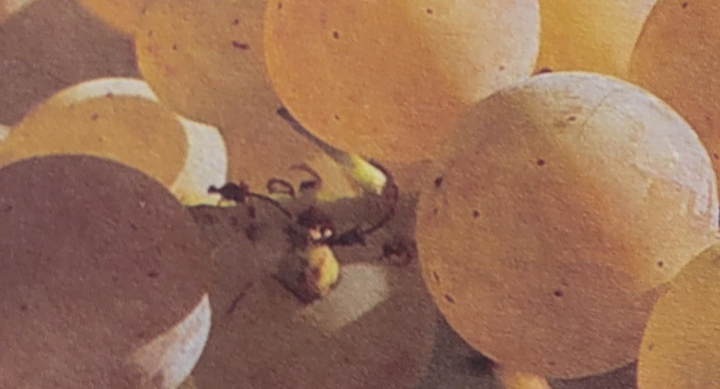
Lately I keep thinking about how long I’ve been using and writing about Korean skincare. It’s been a looong time. Almost ten years, to be exact. I wandered into Reddit’s Skincare Addiction community sometime in 2013 and very quickly followed the mysterious mentions of “Korean snail essence” to the much smaller but already fervently dedicated Asian Beauty subreddit. I haven’t looked back since.
During that time, I’ve tried products from more brands than I can remember. Some of those brands have become huge hits. Many more have fallen to the wayside, either closing their doors or fading into one of those names that provokes a “huh, they’re still around?” reaction when their name pops up again. And yet others stay under the radar, quietly churning out products consistently excellent enough to make them some of the best Korean skincare brands around.
This post is sponsored by Papa Recipe.
For me, Papa Recipe is one of those brands. So when they reached out about featuring their Amazon storefront on my blog, I made a product wishlist and hopped on board. Here are my highlights from the brand!

Of all the types of skincare product that I’ve tried, sheet masks remain my absolute favorite. Nothing else compares to a good sheet mask for an instant boost of plumpness and glow. I also notice that regular use of good sheet masks keeps my skin in its best condition, even if I then skip the sheet mask step for a few days.
I have a personal roster of favorite sheet masks that I like to keep on hand. The Papa Recipe Bombee Honey Mask is among the top sheet masks in my list.
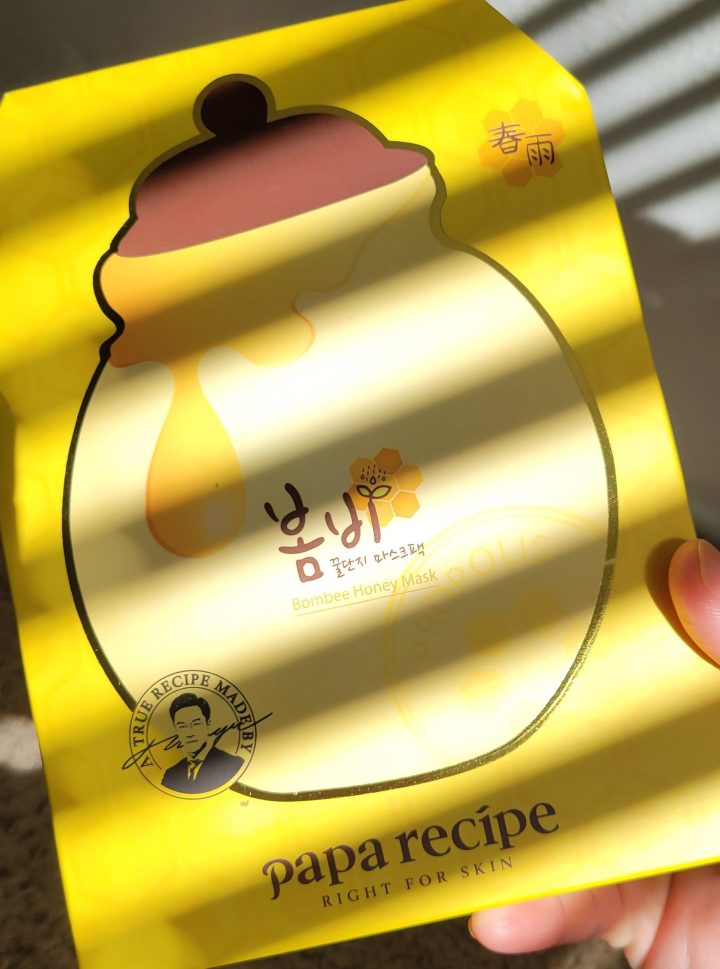
These hit all the key points of an effective sheet mask. At the most basic level, they’re comfortable. My expectations for sheet masks have risen over the years as sheet mask designs and materials have advanced. These days, I need masks that are thin, pliable, clingy, and capable of retaining a lot of essence for a long period of time. The Bombee Honey Masks do all that and well.

They’re a little on the long side for my face, so I snip them in half across the middle and fit the top and bottom halves separately to my face to bring the eye and mouth holes where they need to be. They’re also wider than I need. That’s less of an issue, since I can just let the edges drape over my ears on the sides, fold them back, or cut them off if I’m really feeling fancy.
I don’t count an imperfect fit as a problem. Everyone’s face is different; it’s impossible for any sheet mask to fit every face. So if your face is longer and/or wider than mine, these might be the perfect fit for you as is! If they’re not, that’s what scissors are for.
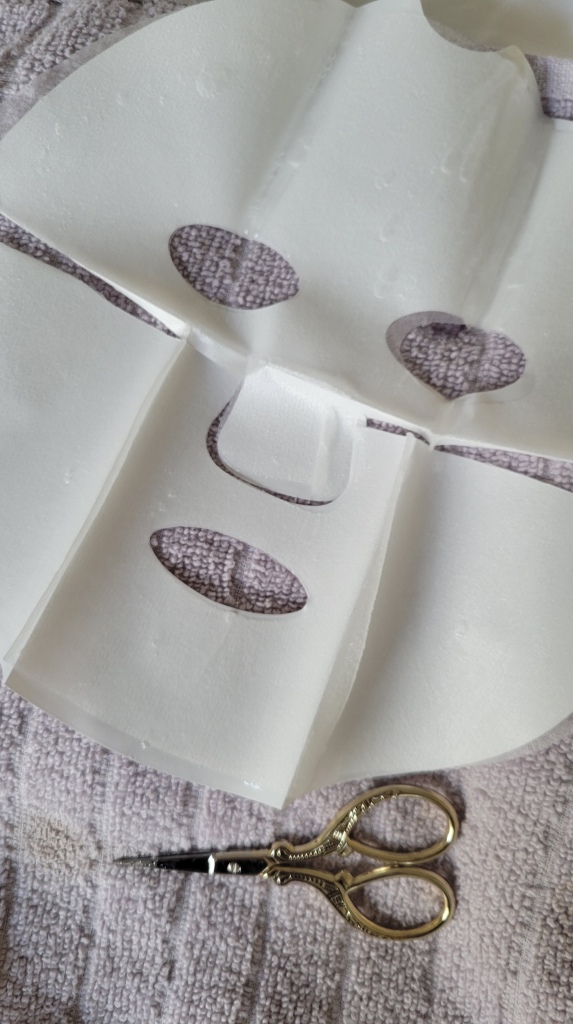
The soft, sheer material of the sheets conforms snugly to my face and stays moist for a good while. This is important. One of the main reasons that sheet masks hydrate so effectively is because the physical occlusion of the sheet helps to slow down evaporation while keeping skin moist at the surface. This allows much more of the hydrating essence to absorb into skin than you’d get from just applying a regular hydrating toner, essence, or serum.
Of course, the formula of the essence itself matters. Even the best sheet mask material in the world won’t save an essence that’s too thick, too thin, irritating, overly messy, or just not hydrating enough. For me, the Bombee Honey Mask essence has always delivered.
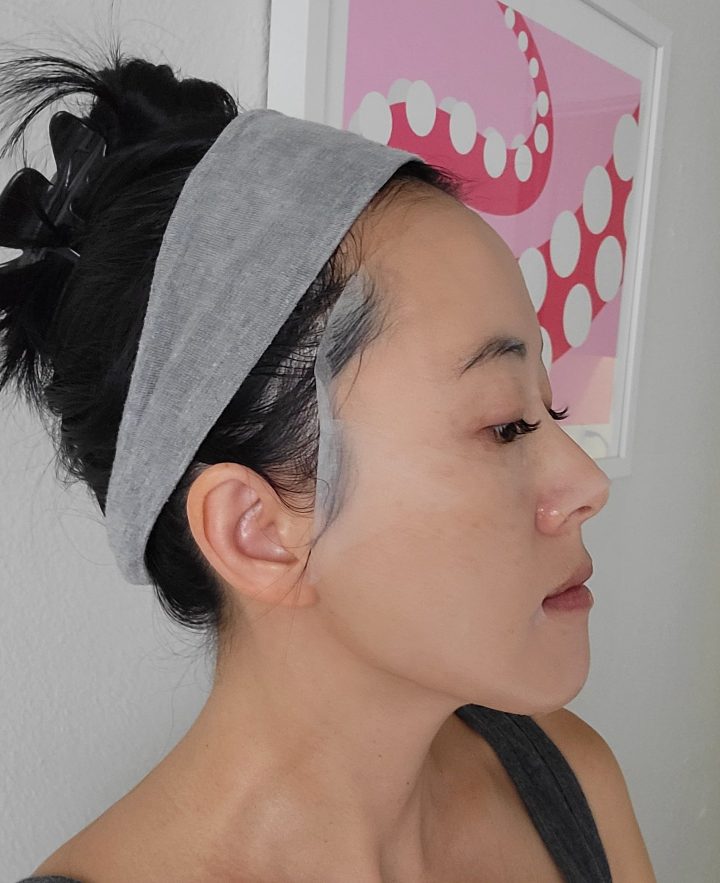
The mask essence is the perfect consistency for my tastes. When an essence is too thin, it tends to hydrate less, dry out faster, and drip everywhere. When it’s too thick and syrupy, it doesn’t absorb as well and leaves an unpleasant residue on skin. The essence in the Bombee Honey masks is just thick enough to stay on my face (no drips into my eyes and mouth!) but light enough to sink in well.
Papa Recipe Bombee Honey Mask ingredients: Water, glycerin, butylene glycol, honey extract, propolis extract, hydroxyethylcellulose, glyceryl acrylate/acrylic acid copolymer, propylene glycol, PVM/MA copolymer, trehalose, PEG-60 hydrogenated castor oil, panthenol, carbomer, arginine, disodium EDTA, allantoin, dipotassium glycyrrhizate, sodium hyaluronate, glycyrrhiza glabra (licorice) root extract, 1,2-hexanediol, caprylyl glycol, schizandra chinensis fruit extract, coptis japonica root extract, zingiber officinale (ginger) root extract, camellia sinensis leaf extract, citrus grandis (grapefruit) seed extract, acorus gramineus root/stem extract, perilla ocymoides leaf extract, fragrance
Ingredients-wise, it has just about everything I want in a sheet mask.
Sheet mask essence formulations have to fit different parameters than leave-on products. The main reason for this is the actual volume of product used at once. Most sheet masks come with 20g or more of essence. To compare that to the amount of a leave-on product that I’d typically apply in one use, I weighed out my usual dose of a facial essence.
I don’t use products sparingly at all. I always cover my entire face, neck, and upper chest area with each application. Even so, a generous single use of one of my thicker essences didn’t even hit 1g.
For cost purposes, this means that sheet mask essences simply can’t contain the higher concentrations of actives and extracts that we expect leave-on products to contain. The cost would become prohibitive. They don’t really need to contain high concentrations of those ingredients anyway, since the primary purpose of a regular use sheet mask is hydration.

So it makes perfect sense that the Bombee Honey Mask ingredients list leads with water and the humectants glycerin and butylene glycol. These are where the main hydrating benefits come from. But the rest of the ingredients do matter and do enhance the masks’ overall effects, so I’m happy to see some of my favorites among them. Honey and propolis, of course, but also licorice and ginger root and tea. The extracts add calming and glow-boosting effects (and a fun factor that matters a lot to me).
Despite the thin material and essence, these sheet masks stay moist for about 30-45 minutes. That’s ideal for my preferences. There’s an old myth that you shouldn’t leave a sheet mask on for longer than about 15 or 20 minutes or else it “sucks the moisture back out of your skin.” One, that’s not how skin (or sheet masks) work. Two, I’ve always seen the best results with sheet masks the longer I wear them. The longer they’re allowed to sit on skin, the more essence skin can absorb.
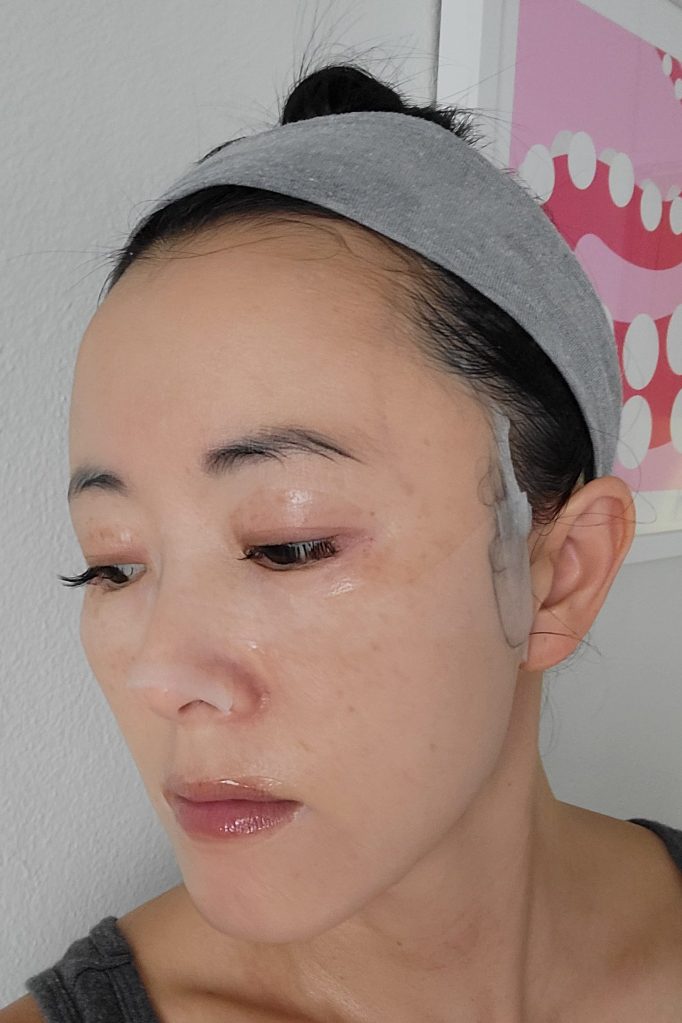
I’ve used the Bombee Honey Masks for years, always with great results. Half an hour to forty-five minutes with one leaves my skin calmer, more even-toned, and plump and bouncy with hydration when I take it off. A layer of moisturizer on top to seal it in, and I’m all set. As an added bonus, the honey scent in these masks is one of the best, making the experience extra relaxing for me.
Finally, a note on the pricing: Since I personally prefer to use sheet masks several times a week to maintain the maxed-out hydration all the time, I prioritize affordably priced masks. Everyone’s budget is different. The Bombee Honey Masks are $19.97 for a pack of 10 on Papa Recipe’s official Amazon storefront. $2/mask falls right into my “regular use” pricing category. I’ve bought plenty of these in the past and will again!
Buy Papa Recipe Bombee Honey Mask here (20% off using one-time code 20fiftyss)
I swear the purple packaging isn’t the only reason I love these products.

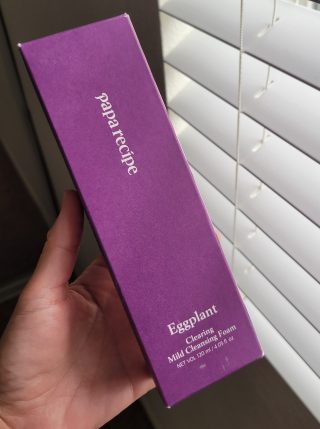
I also love them because the mask itself is purple.
(Just kidding! I love them because they’re excellent foam cleansing and pore-clarifying options for drier and/or more sensitive skin.)
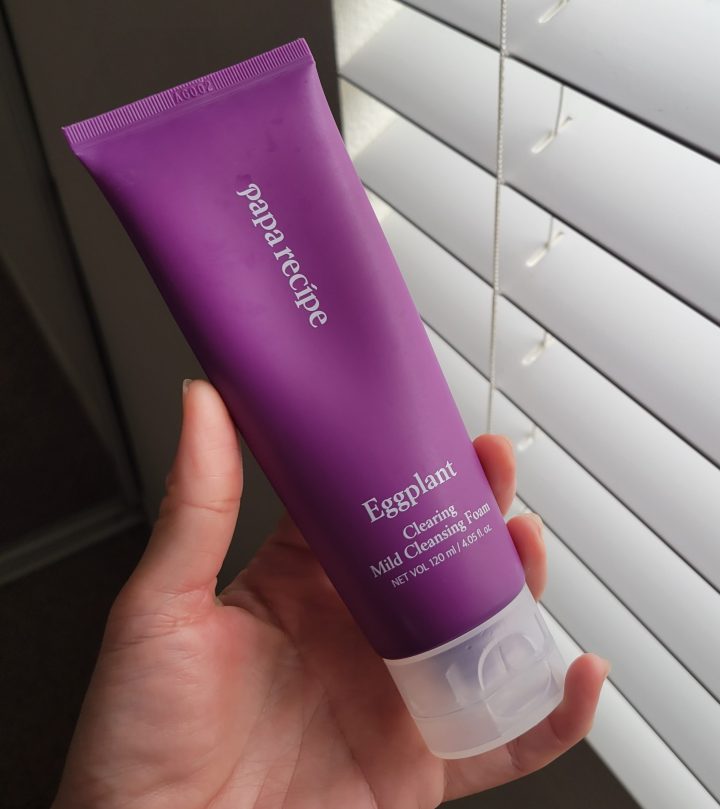
Ever since I learned about the importance of the skin barrier to maintaining healthy, soft, glowy skin, I’ve had a strong preference for gentle cleansers over harsh ones. The outermost layer of skin, aka the stratum corneum or horny layer, holds moisture in and keeps irritants and contaminants out. Overly harsh cleansing damages this horny layer. Skin loses moisture at an accelerated rate and becomes more prone to breakouts and reactions. Very high pH cleansers exacerbate this by disrupting the naturally acidic pH level of the horny layer. Gentle, low pH cleansers preserve barrier integrity and allow skin to retain moisture and repel external aggressors as much as possible.
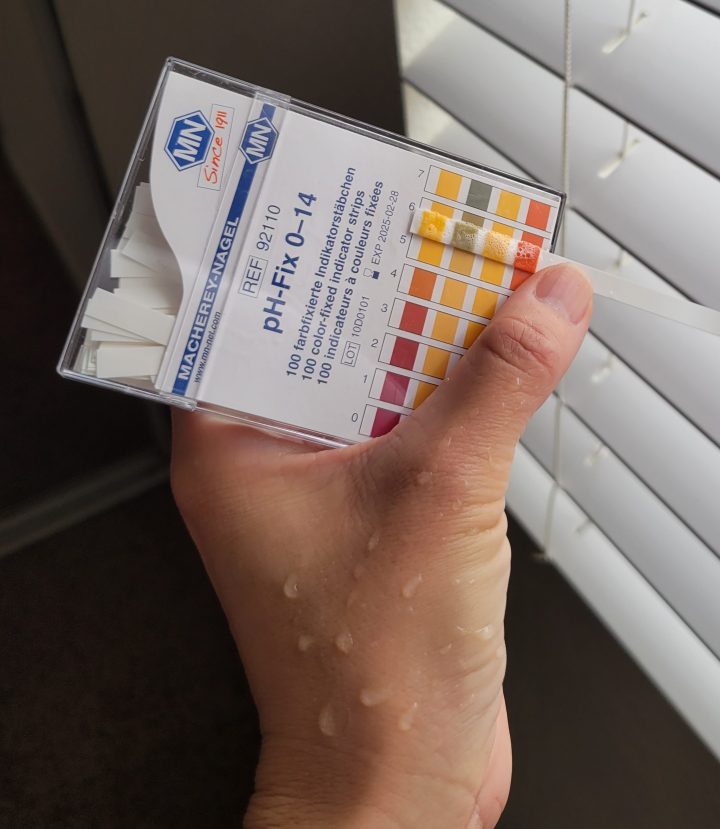
Unfortunately, a lot of gentle, low pH cleansers just aren’t satisfying to use. I’m not a fan of most milk-type cleansers, since the majority of them feel like washing my face with lotion and don’t leave my face fully clean. Non-foaming gel cleansers feel similarly ineffective to me. And while I do have a small stable of low-foam gel cleansers in my shower, I often long for a truly foamy yet still barrier-friendly cleanser when I want that extra clean feeling.
(I’m fully aware that foam doesn’t mean a cleanser cleans better! It’s all marketing. But that marketing worked very well on me, and I can live with the effects of the brainwashing if it means I enjoy my skincare routine a little bit more.)

I first tried Papa Recipe Eggplant Clearing Mild Cleansing Foam years ago at a beauty industry trade show, where I ended up with a handful of foil samples of the product. I loved it. It lathers up in wet hands to a beautifully fluffy foam that stays pillowy as I massage it on my face. The Eggplant Clearing Mild Cleansing Foam also rinses off cleanly and leaves my face feeling refreshed and never stripped. As an added bonus, it tests at a pH of about 5.5, which is generally optimal.
Papa Recipe Eggplant Clearing Mild Cleansing Foam ingredients: Water, glycerin, sodium cocoyl glycinate, sodium lauroyl glutamate, 1,2-hexanediol, butylene glycol, hydroxypropyl starch phosphate, solanum melongena (eggplant) fruit extract, citric acid, gluconolactone, betaine salicylate, lauryl betaine, hydroxyacetophenone, ethylhexylglycerin, sodium chloride, decylene glycol, tocopherol
The first thing I look at in cleansers is whether they contain cleansing ingredients, or combinations of cleansing ingredients, that are too harsh for my skin. In general, the combination of fatty acids like lauric acid, stearic acid, myristic acid, and/or palmitic acid with potassium hydroxide or sodium hydroxide is a no-go. That combo typically indicates that the cleanser is a true soap and will be extremely high pH and harsh.
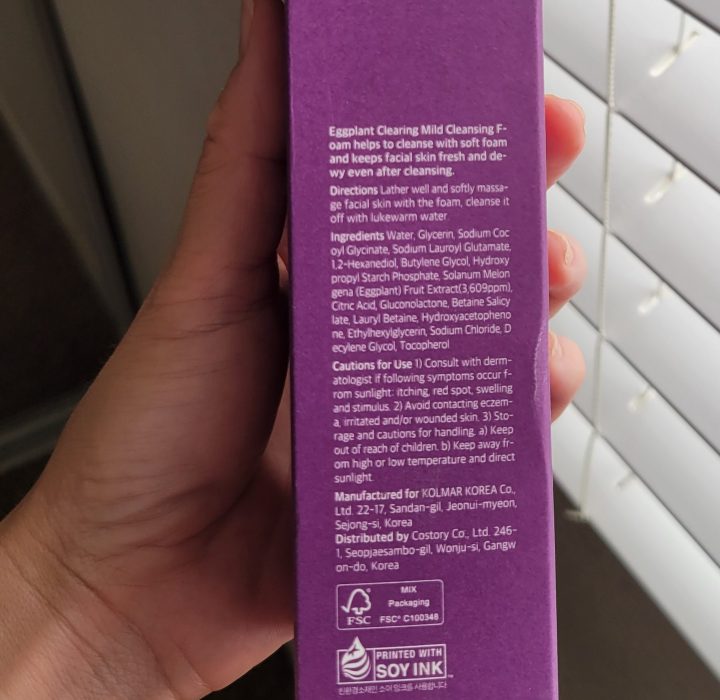
The synthetic detergents sodium lauryl sulfate (SLS) and sodium laureth sulfate (SLES) are milder than true soaps, and sometimes unfairly maligned, but I still prefer to keep them out of my cleansers. SLS in particular can still be stripping, even in a low or neutral pH cleansing product. The Eggplant Clearing Mild Cleansing Foam uses sodium cocoyl glycinate and sodium lauroyl glutamate. Works out great for me.
As a final bonus, this cleanser is unscented. That’s great news for those whose skin reacts to fragrance!
Buy Papa Recipe Eggplant Clearing Mild Cleansing Foam here (20% off with one-time code 20fiftyss)
Drier or more sensitive skin also often get the short end of the stick when it comes to clay masks. Which makes sense. Clay masks are marketed for drawing excess oil and debris out of pores and off of skin. The way they achieve this effect is through the use of ingredients like kaolin clay to absorb oil and stick to foreign particles within pores and on the surface of skin. When you rinse the mask off, the oil and dirt rinse away with it.
Thing is, clay masks don’t discriminate in what they suck up and pull off of your skin. The clay isn’t specifically targeting sebum or even just face oil in general. It’s absorbing whatever moisture it comes into contact with. Depending on the strength of the mask (and your skin barrier), that can include moisture that your skin actually needs to keep in order to look and feel its best. Unfortunately, just because dry skin doesn’t produce as much oil doesn’t mean it won’t benefit from the occasional clarifying treatment. Any skin type can pick up contaminants and any skin type can get clogged pores.
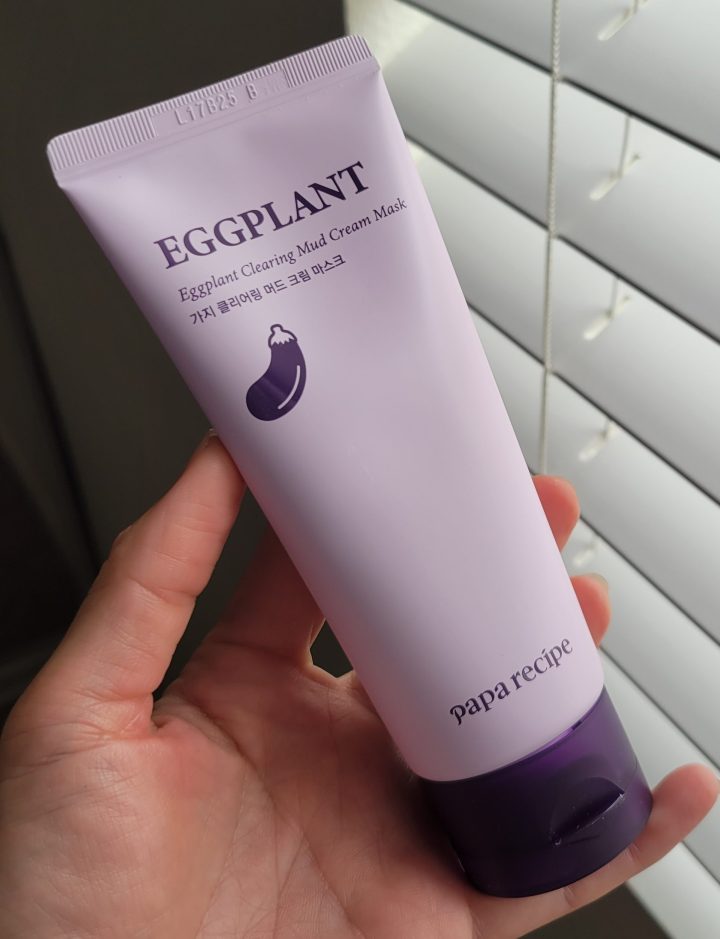
The Papa Recipe Eggplant Clearing Mud Cream Mask was one of the first ones I tried that addressed this conundrum well. With 65% eggplant extract, just 15% kaolin clay (and a fraction of a percent of bentonite clay), and some additional moisturizing ingredients and calming plant extracts, it’s much gentler than more traditional masks, which tend to use much higher volumes of clay.
The texture of the mask is much friendlier for easily irritated skin than most products in this category, too. Right out of the tube, it feels more like a cream than a clay mask, even with the light sprinkling of exfoliating grains mixed throughout. It applies smoothly, doesn’t harden or crack, and rinses off without tugging at skin.
Despite these measures aimed at reducing the risks of dryness and irritation, the Eggplant Clearing Mud Cream Mask isn’t wimpy. I’ve been using it about once per week. It leaves my skin looking brighter and fresher, and the visible pores on and around my nose always look cleaner and smaller. As an occasional supplement to my daily BHA, it’s been a great way to maintain my pores without going overboard.
Papa Recipe Eggplant Clearing Mud Cream Mask ingredients: Solanum melongena (eggplant) fruit extract (65%), kaolin (15%), propanediol, dipropylene glycol, isononyl isononanoate, 1,2-hexanediol, ultramarines (CI 77007), arachidyl alcohol, cetyl alcohol, glyceryl stearate, stearyl alcohol, behenyl alcohol, iron oxide red (CI 77491), titanium dioxide (CI 77891), juglans regia (walnut) shell powder, arachidyl glucoside, salvia hispanica seed extract, centella asiatica extract, houttuynia cordata extract, potassium cetyl phosphate, bentonite (0.1%), betula alba juice, water, glyceryl stearate SE, ethylhexylglycerin, xanthan gum, tocopheryl acetate, butylene glycol, disodium EDTA, allantoin, glucose, calendula officinalis flower extract, hydroxycinnamic acid, rutin
Eggplant fruit extract isn’t an ingredient I’ve seen featured in many cosmetics, so I did a little digging to try to unearth its claimed benefits. I found very little in the English-language research literature. CosDNA simply states its purpose as “skin conditioning,” which just means that it acts as an emollient moisturizer to smooth skin’s surface texture. That works for me. I’ll also add that in general, plant extracts tend to have some antioxidant content, so as long as your skin doesn’t object to that particular ingredient, having some beats having none!
Buy Papa Recipe Eggplant Clearing Mud Cream Mask here (20% off with one-time code 20fiftyss!)
Noble…what?
That was my first thought too. Followed by: Is that a typo?

It isn’t. “Noble rot” refers to what happens when wine grapes are infected by the Botrytis cinerea fungus under very specific conditions. When those conditions are met, instead of ruining the batch, the Botrytis cinerea infection “removes water from the grapes, leaving behind a higher percent of solids, such as sugars, fruit acids and minerals. This results in a more intense, concentrated final product” like a sweet dessert wine.
This is relevant to skincare because wine making involves the process of fermentation, something many of us know and love in our beauty products. Fermentation breaks down the components of a raw ingredient into smaller and theoretically more bioavailable forms. If fermentation is applied to grapes that have already undergone noble rot and are therefore more highly concentrated anyway, the end result could be something more special than extracts made from grapes that haven’t been affected by noble rot.

The standard, not-noble Vitis vinifera (grape) extract shows up frequently in skincare. Its antioxidant content makes it a natural fit for products marketed as helping to delay or reverse visible skin aging. Grapes are a particularly notable source of the antioxidant resveratrol, which may also help inhibit and reverse sun-induced hyperpigmentation.
Due to the lack of English-language research into the use of noble rot in cosmetics ingredients, let alone well designed in vivo English-language research into it, it’s hard to know exactly what differences we can expect. But I’ve written about the limited research into skincare ingredients before and I stand by what I said all the way back in 2015. Research funds are limited, the world of potentially great skincare ingredients is vast, and if we limit ourselves to only that which already has been rigorously studied, our skincare routines will be nothing but a joyless parade of acids and retinoids and SPF. Just because the research does not yet exist, doesn’t mean an ingredient is inherently unworthy.

Also, much more goes into any product than just the featured ingredient in the name. Overall formulation matters quite a bit.
The Papa Recipe Noble Rot Lifting Essence and Lifting Ampoule are marketed for aging skin. Their overall formulas and textures bear that out. As we age, our skin tends to produce fewer of the lipids and other natural moisturizing factors (NMFs) that help our complexions retain a youthful bounce and glow. We therefore tend to need richer products to help replenish that moisture.
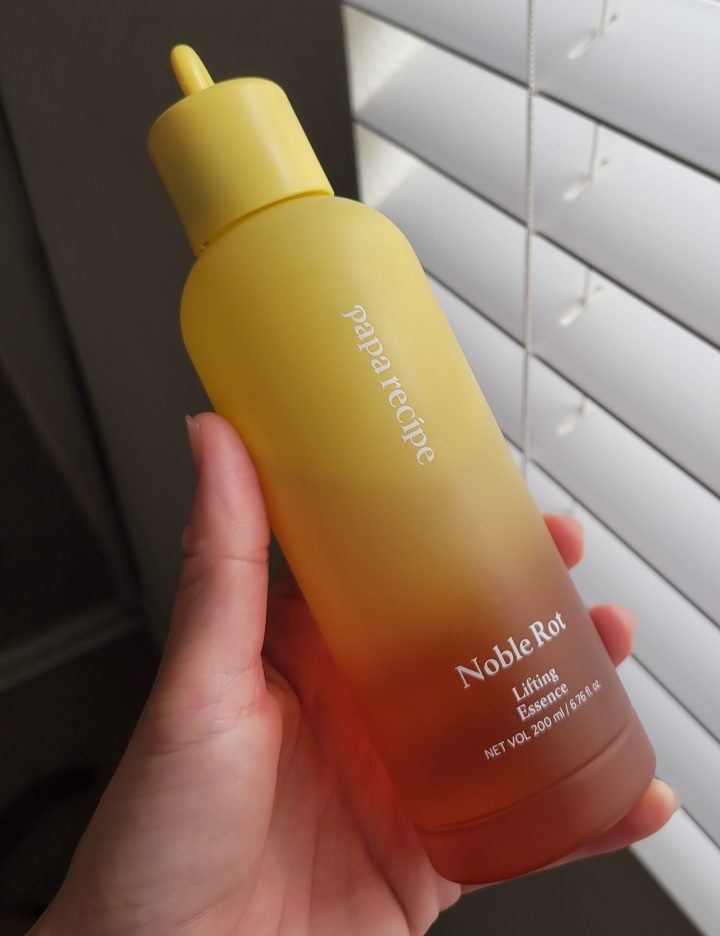
The Noble Rot Lifting Essence is a fairly watery, toner-like product that I’ve been using in the hydrating toner slot of my morning and evening skincare routines. It’s smooth, scentless, and deceptively rich once applied. Based on how thin it is, I expected it to disappear right into my face immediately upon application. Instead, it takes a couple of minutes to sink in and leaves my face looking and feeling more nourished and alive.

The Noble Rot Lifting Ampoule amplifies that effect. A little goes a long way with this one: It’s a biphase (separated oil and water) product that you shake in the bottle to mix right before dispensing and applying. Once mixed, it’s a milky liquid. I pat it on after the essence, then wait a few minutes for it to absorb.
The fatty content in this ampoule gives it a remarkable emollient effect. It doesn’t just plump up and smooth out the surface of my skin. It makes it look denser and more taut, in a way that very few products I’ve tried over the years have done. The combination of its moisturizing effects and that appearance of increased density create an overall firmer look. I love it.
Papa Recipe Noble Rot Lifting Essence ingredients: Botrytis cinerea/grape fruit ferment extract, water, butylene glycol, glycerin, panthenol, 1,2-hexanediol, chondrus crispus extract, glyceryl acrylate/acrylic acid copolymer, hydroxyethylcellulose, adenosine, dipropylene glycol, PVM/MA copolymer, pantolactone, sodium hyaluronate, ethylhexylglycerin, disodium EDTA
Papa Recipe Noble Rot Lifting Ampoule ingredients: Botrytis cinerea/grape fruit ferment extract, hydrogenated polydecene, butylene glycol, glycerin, propanediol, 1,2-hexanediol, macadamia integrifolia seed oil, sodium chloride, alcohol, water, C12-14 pareth-12, tocopheryl acetate, cellulose gum, ethylhexylglycerin, capryloyl salicylic acid, adenosine, hydroxyethylcellulose, dextrin, poloxamer 407, gardenia florida fruit extract, theobroma cacao (cocoa) extract, benzyl glycol, hydrolyzed glycosaminoglycans, sodium hyaluronate, sodium hyaluronate crosspolymer, arginine, hydrolyzed hyaluronic acid, hydroxypropyltrimonium hyaluronate, carbomer, hyaluronic acid, BHT, sodium acetylated hyaluronate, raspberry ketone, disodium EDTA
So where do products like the Noble Rot Lifting Essence and Noble Rot Lifting Ampoule sit in a well-rounded anti-aging skincare routine?
In my book, I make a distinction between actives and supplementary ingredients and products. Actives are those highly regarded, extensively researched ingredients—certain retinoids and certain forms of vitamin C come to mind—that we rely on for primary effects like increased collagen production.
Supplementary ingredients are the less researched but still promising and generally far more fun ones to play around with. Honey, propolis, eggplant, snail, and even noble rot grape extract. Those nourishing, moisturizing, smoothing, calming, and antioxidant effects are just as important, in my opinion.
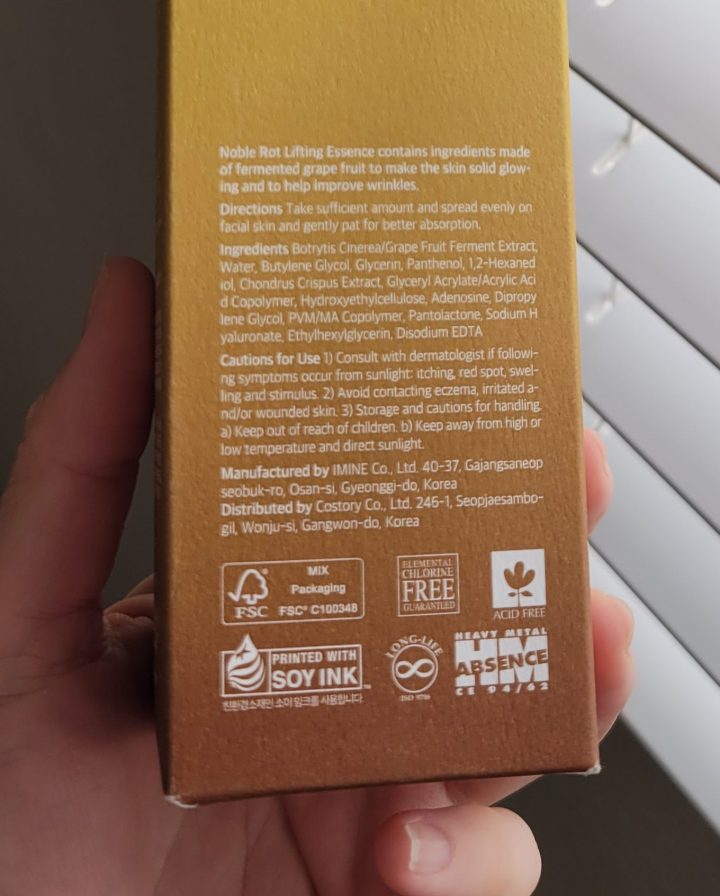
Skin that’s practically bursting with collagen still won’t look its best if its upper layers are dull, dry, and irritated. In fact, if given the choice between layers of nourishing hydration without actives, or actives without layers of nourishing hydration, I’d choose the layers of hydration without hesitation. So I’ll keep using the Noble Rot (and the eggplant and the Bombee Honey). And my skin will keep on thanking me for it!
Buy Papa Recipe Noble Rot Lifting Essence here (20% off with one-time code 20fiftyss)
Buy Papa Recipe Noble Rot Lifting Ampoule here (20% off with one-time code 20fiftyss)
I’ve been using Papa Recipe products for years and always thought of them as a staple brand: reliable and affordable and fun. To me, they’ve long been one of the best Korean skincare brands, so I was surprised to consider that they might need an introduction! If this is your first time learning about the brand, I hope this was helpful. And if you’ve known of them for a long time but haven’t ventured far beyond the Bombee Honey masks, I hope you found some new things to try too.
Shop Papa Recipe’s Amazon store here (stock up with 20% off with one-time code 20fiftyss)!




